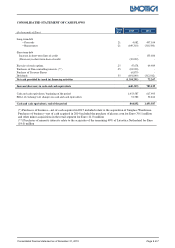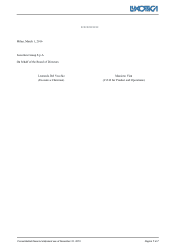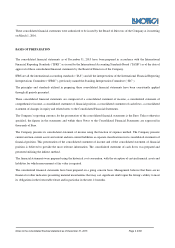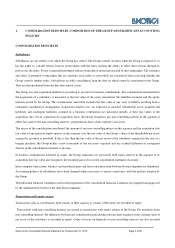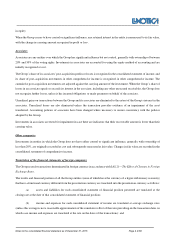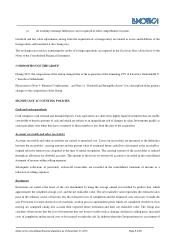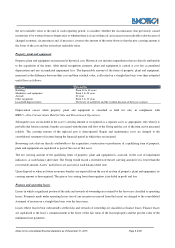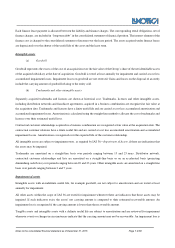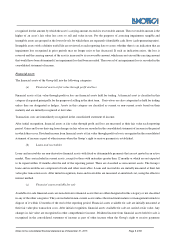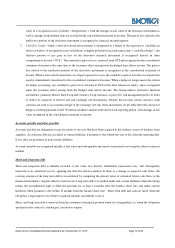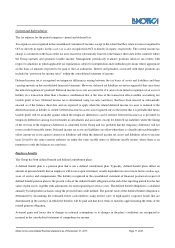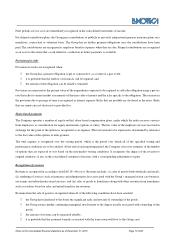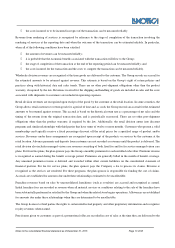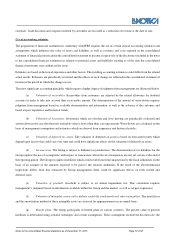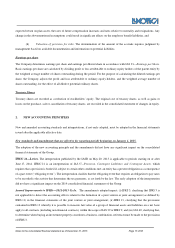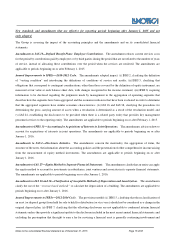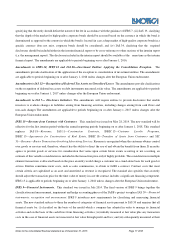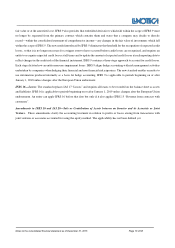LensCrafters 2015 Annual Report Download - page 102
Download and view the complete annual report
Please find page 102 of the 2015 LensCrafters annual report below. You can navigate through the pages in the report by either clicking on the pages listed below, or by using the keyword search tool below to find specific information within the annual report.
Notes to the consolidated financial statement as of December 31, 2015 Page 8 di 68
recognized for the amount by which the asset’s carrying amount exceeds its recoverable amount. The recoverable amount is the
higher of an asset’s fair value less costs to sell and value in use. For the purposes of assessing impairment, tangible and
intangible assets are grouped at the lowest levels for which there are separately identifiable cash flows (cash-generating units).
Intangible assets with a definite useful life are reviewed at each reporting date to assess whether there is an indication that an
impairment loss recognized in prior periods may no longer exist or has decreased. If such an indication exists, the loss is
reversed and the carrying amount of the asset is increased to its recoverable amount, which may not exceed the carrying amount
that would have been determined if no impairment loss had been recorded. The reversal of an impairment loss is recorded in the
consolidated statement of income.
Financial assets
The financial assets of the Group fall into the following categories:
(a) Financial assets at fair value through profit and loss
Financial assets at fair value through profit or loss are financial assets held for trading. A financial asset is classified in this
category if acquired principally for the purpose of selling in the short term. Derivatives are also categorized as held for trading
unless they are designated as hedges. Assets in this category are classified as current or non-current assets based on their
maturity and are initially recognized at fair value.
Transaction costs are immediately recognized in the consolidated statement of income.
After initial recognition, financial assets at fair value through profit and loss are measured at their fair value each reporting
period. Gains and losses deriving from changes in fair value are recorded in the consolidated statement of income in the period
in which they occur. Dividend income from financial assets at fair value through profit or loss is recognized in the consolidated
statement of income as part of other income when the Group’s right to receive payments is established.
(b) Loans and receivables
Loans and receivables are non-derivative financial assets with fixed or determinable payments that are not quoted in an active
market. They are included in current assets, except for those with maturities greater than 12 months or which are not expected
to be repaid within 12 months after the end of the reporting period. These are classified as non-current assets. The Group’s
loans and receivables are comprised of trade and other receivables. Loans and receivables are initially measured at their fair
value plus transaction costs. After initial recognition, loans and receivables are measured at amortized cost, using the effective
interest method.
(c) Financial assets available for sale
Available-for-sale financial assets are non-derivative financial assets that are either designated in this category or not classified
in any of the other categories. They are included in non-current assets unless the investment matures or management intends to
dispose of it within 12 months of the end of the reporting period. Financial assets available for sale are initially measured at
their fair value plus transaction costs. After initial recognition, financial assets available for sale are carried at fair value. Any
changes in fair value are recognized in other comprehensive income. Dividend income from financial assets held for sale is
recognized in the consolidated statement of income as part of other income when the Group’s right to receive payments


